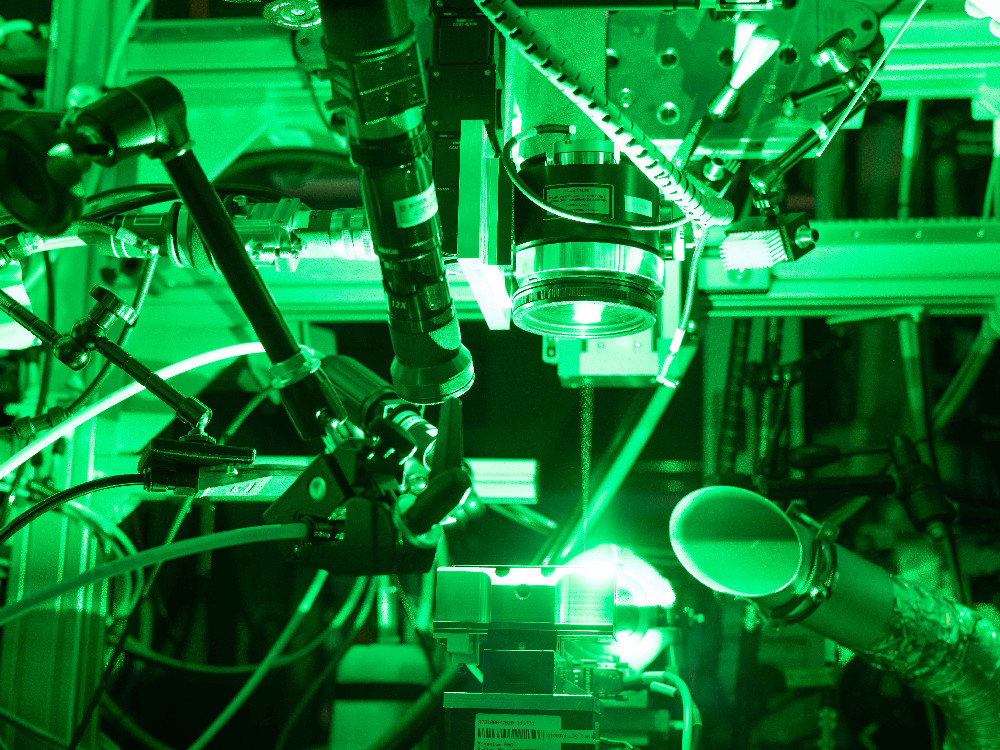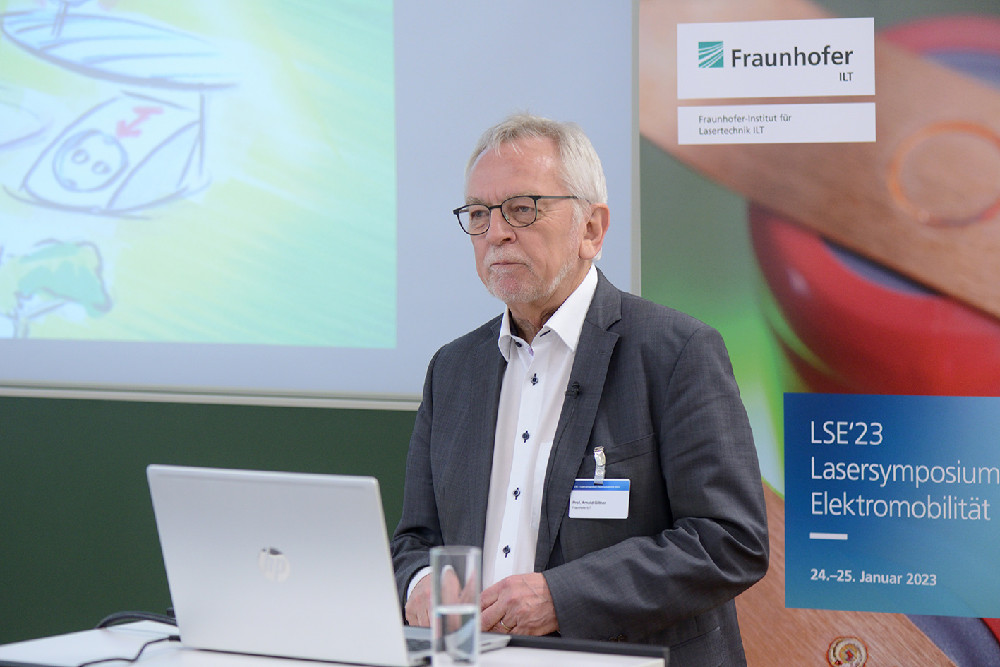
14 Nov Innovative laser technologies for e-mobility
One of the key questions of the transport transition is: How can e-vehicles be produced sustainably and economically at the same time? To answer this question, the Fraunhofer Institute for Laser Technology ILT is developing laser technology solutions together with industrial partners.
Herbert Diess, former CEO of the Volkswagen Group, described the battery as the “heart of the electric car and the key to the future of mobility”. This is also reflected in the price: according to the German Federal Ministry for Economic Affairs and Climate Protection (BMWK), the battery accounts for up to 40% of the added value of an electric vehicle. According to the Fraunhofer ILT, 40 battery gigafactories are currently under construction or in planning in Europe alone.
The task now is to further reduce battery costs, which have already fallen significantly to just under 100 US dollars per kilowatt hour. Professor Arnold Gillner, Head of Business Development at Fraunhofer ILT, identified two important tasks at the Laser Symposium on Electromobility LSE’23 in January 2023: “In addition to reducing energy consumption in the production of batteries, it is important to increase their energy density in the long term by using new materials.”

Prof. Arnold Gillner, Head of Business Development at Fraunhofer ILT, emphasizes that the energy density of batteries must be increased by using new materials. Image: Fraunhofer ILT
Laser-based battery production
In the in-house Battery Lab, the latest technology and various systems for laser-based battery production are available on almost 140 square meters to research new materials and processes, report the Fraunhofer researchers. There are electrical and mechanical test benches that allow direct evaluation of the laser processes for both current lithium-ion batteries with liquid electrolytes and future solid-state batteries, the researchers continue. The Battery Lab has an argon-operated GloveBox system in which vacuum-based PVD coating technology and a high-temperature furnace are integrated. This will allow air-sensitive solid-state cell materials to be coated and then assembled into test cells.
Energy consumption halved thanks to diode laser
At Hannover Messe 2023, a Fraunhofer team demonstrated how energy consumption can be reduced when drying the graphite electrodes of lithium-ion batteries. According to the researchers, the copper foils coated with graphite paste have so far been dried at a temperature of 160 to 180 °C in gas-powered continuous ovens using the roll-to-roll process. At the Fraunhofer ILT, these energy-intensive processes are being replaced by a system with a diode laser that heats the electrode over a large area using special optics. Samuel Fink, group leader for thin-film processes at the Fraunhofer ILT: “Drying with the diode laser reduces the energy requirement by up to 50 % and the space requirement for an industrial-scale drying system by at least 60 %.”

Drying with a diode laser: thanks to special optics, the laser heats a larger area on the copper foil coated with graphite paste. Image: Fraunhofer ILT
Multi-beam from the high-power laser
According to the researchers, they also have their sights set on energy density: in Hanover, the institute presented a high-power ultrashort pulse laser that splits the infrared, pulsed laser beam into 24 partial beams in order to structure the battery electrodes. The multi-beam optics were developed and implemented in close collaboration with Pulsar Photonics, a Fraunhofer ILT spin-off founded in 2013. According to the researchers, the process is not new, but the team is said to have succeeded in transferring the method from laboratory scale to a scalable, industry-ready process.
Blue, green or red: it all depends on the application
The Lappish start-up Aurora Powertrains has developed a waterproof and dustproof battery with IP67 classification for its electric snowmobile eSled, which has a high energy density of more than 190 Wh/kg. The customized laser technology developed at the Fraunhofer ILT connects the aluminum cell conductor with the copper conductor. “Because the aluminum is on top during production, the advantage of absorption at green or blue laser wavelengths is not as significant as with copper,” explains Dr. Alexander Olowinsky, head of the Joining and Separation department at Fraunhofer ILT. “The single-mode infrared laser with a small beam diameter is the more elegant, faster and significantly more cost-effective solution, because the beam quality is currently even worse with green or blue due to the system.”

The Finnish start-up Aurora Powertrains has developed a completely new battery concept for its electric snowmobile, which is attracting interest from companies in a wide range of industries due to its high energy density and IP67 classification. Image: Aurora Powertrains
X-ray videos of the welding process
In order to deepen their basic know-how, the Fraunhofer researchers, together with colleagues from the Chair of Laser Technology at RWTH Aachen University and the company Trumpf at the German Electron Synchrotron DESY in Hamburg, investigated the wavelength at which electrical copper contacts of high-performance electronics for electric vehicles can be laser-welded reliably, stably and quickly. The answers were provided by the high-brilliance radiation of the PETRA III synchrotron ring at DESY, which can record up to 20,000 images per second. Supported by experts from the Helmholtz Center Hereon, the team used an X-ray beam to look through the molten copper in the laser beam.
According to the researchers, the tests not only proved that the non-ferrous metal is best welded with green laser light. The sharp X-ray videos of the laser processes also showed for the first time how the smallest changes in the laser parameters affect the welding depth, pore formation and spatter formation.
LSE – Laser Symposium Electromobility
Interested parties can find out more about Fraunhofer ILT’s research and development in the field of electromobility at the LSE – Laser Symposium Electromobility 2024 on January 23 and 24, 2024.
Source: www.ilt.fraunhofer.de
Image: Trumpf






